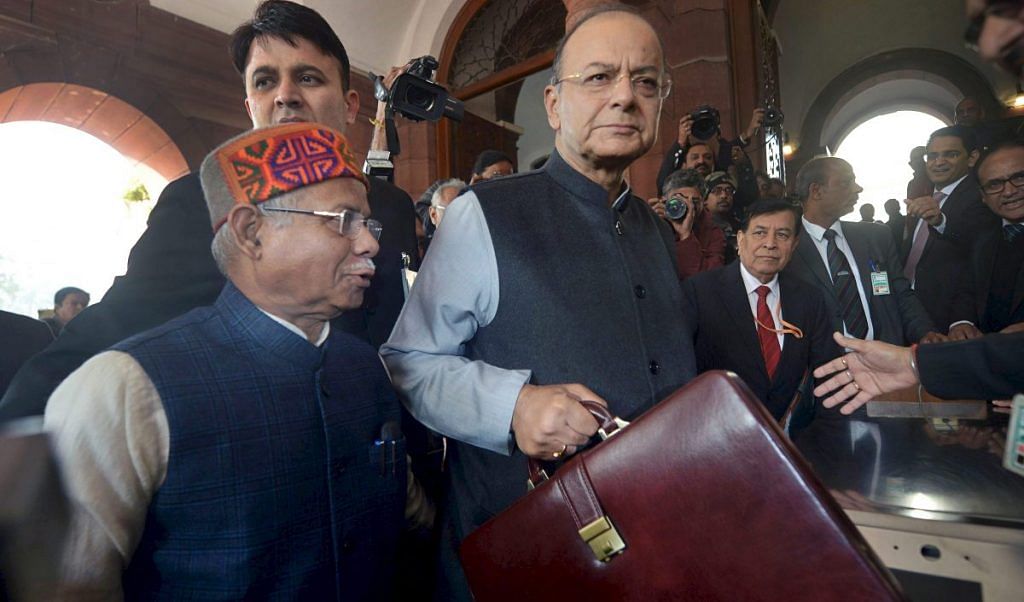The government has been struggling with managing its spending following the rollout of the goods and services tax last year as well as the impact of demonetisation.
New Delhi: The big, macro numbers from the last full budget of the Narendra Modi government are mixed – some room for hope, some for celebration and some for concern.
But the bottomline: the Indian economy seems to be turning the corner months after the growth rate dipped to its lowest in years.
Presenting the budget for 2018-19 Thursday, Finance Minister Arun Jaitley said India is on course to achieve over 8 per cent economic growth, boosted by good performance in manufacturing, services and exports. The GDP for the second-half of the current fiscal has been pegged at between 7.2 per cent and 7.5 per cent.
The economy expanded at the rate of 6.3 per cent in the second quarter of 2017-18, following a slowdown as the goods and services tax came into effect and the economy pulled out of the impact of demonetisation drive.
But the news on fiscal deficit didn’t bring cheer as the government pegged its fiscal deficit target for 2018-19 at 3.3 per cent of the GDP against the desirable level of 3 per cent and revised the estimates for 2017-18 to 3.5 per cent or 5.95 lakh crore.
Jaitley said the impact of a shortfall from non-tax revenue due to deferral of spectrum allocation and accounting of revenue from GST for 11 months and not 12 was offset by higher direct tax revenue and bigger receipts from disinvestments.
The government has been struggling with managing its spending following the roll out of the goods and services tax last year as well as the impact of demonetisation.
In other good news, stake sale in public sector units earned the government Rs 1 lakh crore against the targeted Rs 72,500 crore. And the target for disinvestments has been raised to Rs 80,000 crore for 2018-19.
The Exchange Traded Fund Bharat-22, which was introduced to raise Rs 14,500 crore, was oversubscribed in all segments.
The finance minister said that the bank recapitalisation programme has been launched with bonds of Rs 80,000 crore being issued this year. This recapitalisation will pave the way for public sector banks to lend additional credit of Rs 5 lakh crore. In addition, it is proposed to allow strong regional rural banks to raise capital from the market to enable them to increase their credit to the rural economy.
The government has proposed to accept the recommendations of the Fiscal Reform and Budgetary Committee relating to the adoption of the debt rule and to bring down the national debt to 40 per cent of the GDP. They have also accepted the recommendation to use the fiscal deficit target as key operational parameter.
